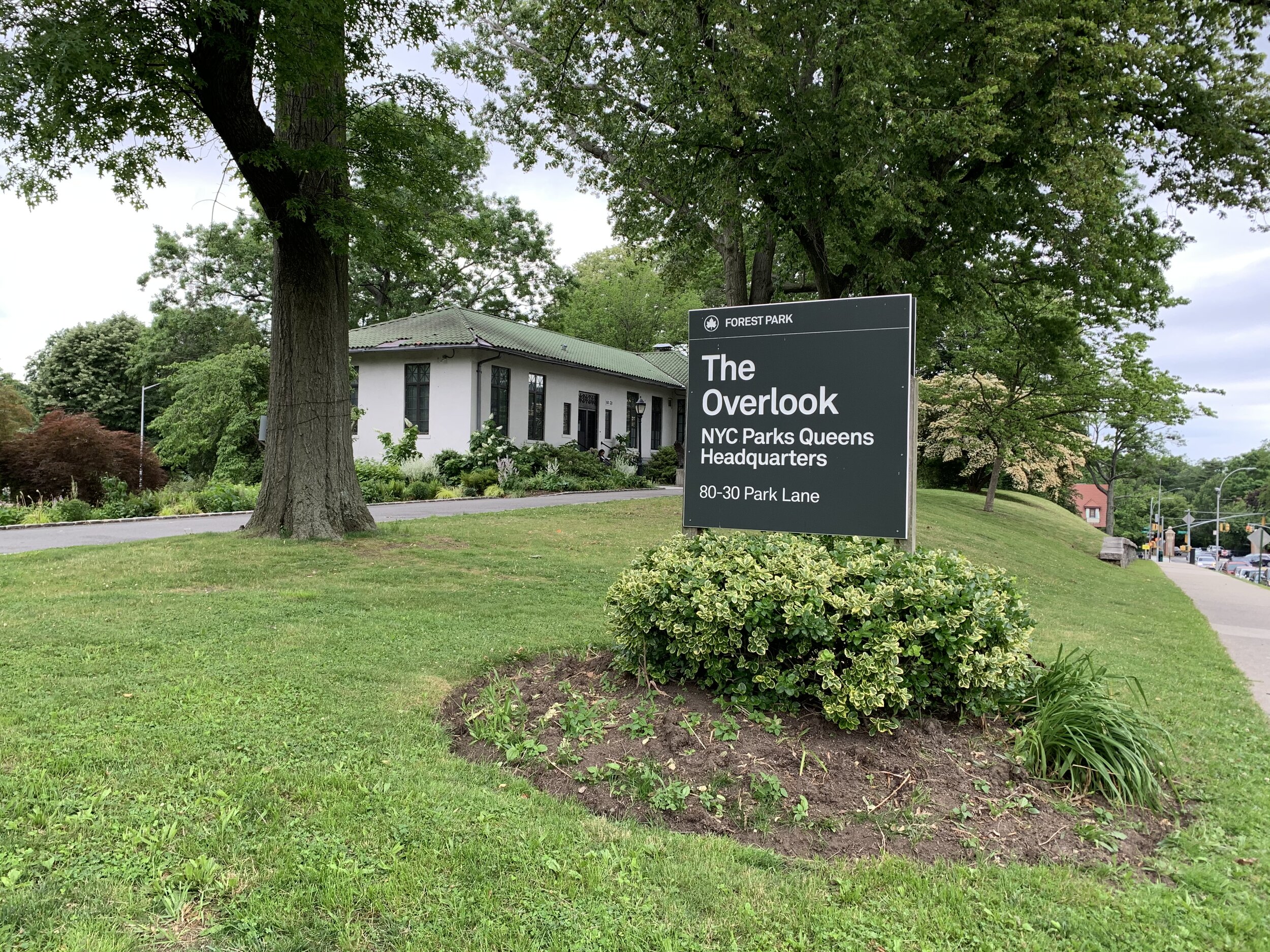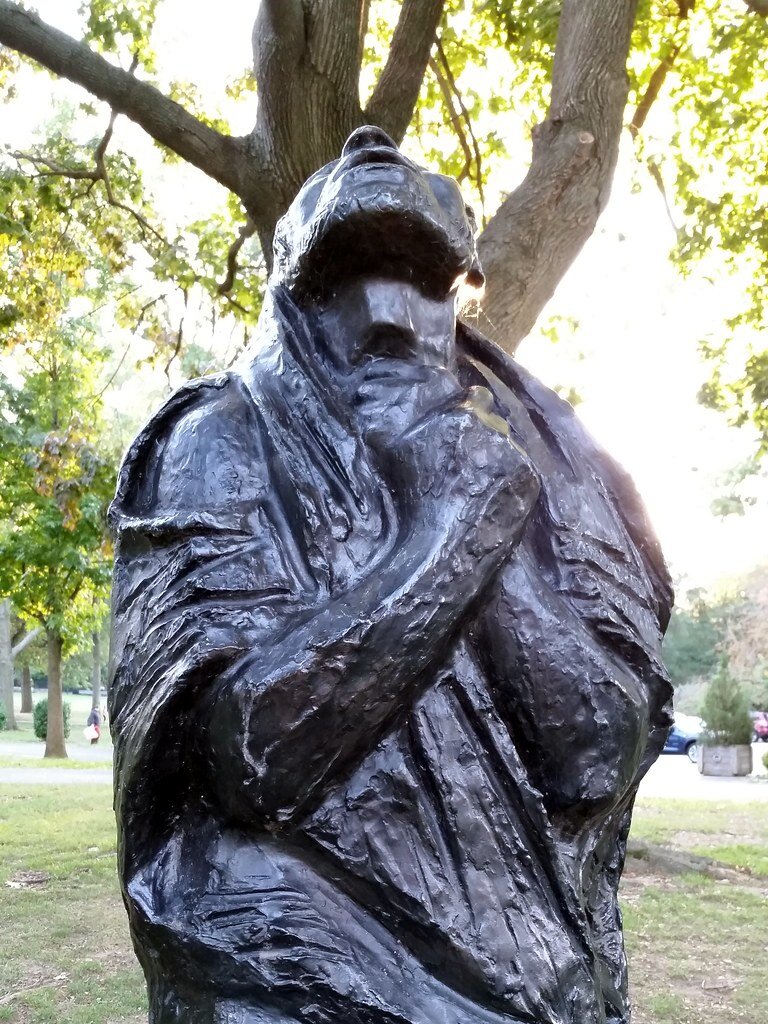
Kew Gardens is home to several landmarks.
Ralph Bunche House
Ralph Bunche helped found the United Nations in 1945, and won the Nobel Peace Prize in 1950 for mediating armistice agreements between Israel and its neighboring countries. In 1952, he and his wife, Ruth Bunche, used the award money that came with the Nobel Prize to buy this house for themselves and their three children. He lived there, serving on the KGCA’s Board of Governors, until his death in 1971, and his wife lived there until her death in 1988. The house was designed by Koch & Wagner and is in the neo-Tudor style. The house is not open to visitors.
115-24 Grosvenor Road
Maple Grove Cemetery
It all begins with an idea. Maybe you want to launch a business. Maybe you want to turn a hobby into something more. Or maybe you have a creative project to share with the world. Maple Grove is a 65 acre non-sectarian cemetery established in 1875 and consists of two sections: Monumental Park and Memorial Park. The Victorian Era Monumental Park was the first section, opened in 1875, and laid out in the rural cemetery tradition, with panoramic winding roads through a forest-covered hilly terrain, with the original entrance at Queens Boulevard. The Lodge Building, located at the Queens Boulevard entrance, and the Receiving Tomb were erected in 1875. The Victorian Administration Building was erected in 1880 at the Lefferts Boulevard and Kew Gardens Road entrance. All were designed by noted New York City architect James E. Ware (1846-1918). A historical walking tour map including over 50 sites can be downloaded at the Friends of Maple Grove website.
127-15 Kew Gardens Road
The Overlook
In 1898 the five boroughs were consolidated to form the City of New York; at that time what was then the Brooklyn Parks Department managed the parklands in what is now all of Queens and Brooklyn. It was not until 1911 that an independent Queens Parks Department was established for the borough, and a new building was designed to house the administration. The result was the Overlook, so named for its sweeping view of Forest Park. The firm of Birchman & Fox designed the Spanish Mission-style structure. The design was approved on August 30, 1911, and construction was completed on December 17, 1912. Soon after the first Queens Parks Commissioner, Walter G. Eliot, moved his office from the Arsenal in Central Park to the Overlook, the one-room building proved to be too small, and Parks added six rooms in 1915, designed by Erdmann and Hahn. Today, the Overlook has eight rooms on the ground level and six rooms on the basement level.
Park Lane South & 80th Road
Forest Park
Forest Park covers 538 acres of city parkland on the crest of the Harbor Hills terminal moraine, a ridge of sand rock that the Wisconsin glacier left when it retreated some 15,000 years ago. Forest Park boasts the largest forest in Queens and is one of the best places in the city to witness spring migration of land birds. Nearly every species of warbler, vireo and thrush occurring in the northeastern United States has been seen here. The land was inhabited by the Rockaway, Lenape, and Delaware Native Americans when the Dutch West India Company settled the area in 1635.
The site of Forest Park was occupied by various landowners until the late 19th century, when City of Brooklyn officials looked for land for a large public park. In 1892, the New York State Legislature authorized the park search, and the Brooklyn Parks Department purchased the first parcel of this space on August 9, 1895, whereupon the name Brooklyn Forest Park was first used. Because of the numerous private landowners involved, the park had to be assembled in 124 parcels, finishing in 1898.
Starting in 1896, the landscaping firm of Olmsted, Olmsted & Eliot was commissioned to provide a plan for the park. Frederick Law Olmsted surveyed the park and designed Forest Park Drive. He also co-designed Central and Prospect Parks. Existing residential buildings were auctioned and disassembled and removed. A nine-hole golf course opened in 1901.
Statue of Job
This five-foot tall bronze statue of Job, mounted on a two-foot high schist and concrete base, is one of two casts of a sculpture created by Nathan J. Rapoport (1911-1987) for the 1968 celebration of the twentieth anniversary of the founding of the State of Israel. Both were acquired by Dr. Murray and Sylvia Fuhrman, former residents of Kew Gardens, who donated one to Yad Vashem, Israel’s National Holocaust Museum, in Jerusalem. Mrs. Fuhrman was for many years the KGCA’s President and later Board Chairman. The other stood in the Fuhrmans’ garden until 1986, when they donated it to the City of New York. In the following year, Job was installed in Forest Park, just north of the Overlook, the borough headquarters for Parks in Queens.
Rapoport chose to depict the figure of Job, the biblical character whose story is told in the Old Testament, to convey the universal suffering and ultimate test of faith that was visited upon the victims of the Holocaust. According to the Book of Job, the "perfect and upright man" is bereft of his family, his possessions, and even his health when the devil challenges the depth of his piety. Wrapped in a torn prayer shawl, with his head tilted heavenward and his hands clasped together, Job questions God’s justice in rewarding his faith with despair. In the Bible, Job’s life is subsequently restored to its former happy state.
Rapoport was born in Poland and studied at the Warsaw Academy of Art and the École Superieure Nationale de Beaux Arts in Paris, France. He escaped the Nazis by fleeing to Russia in 1939 at the outbreak of World War II. Rapoport lived in France and Israel before coming to America in 1959. A resident of Manhattan, he became a United States citizen in 1965. Rapoport’s art was profoundly influenced by the Holocaust. One of his most celebrated works is Warsaw Ghetto Uprising, a 33-foot high memorial that was erected in 1948 at the site where the Jewish uprising against the Nazis began in February 1943. Rapoport was awarded the Herbert Adams medal for outstanding achievement in American sculpture by the National Sculpture Society in May 1987, less than a month before he died
80th Road and Park Lane South




